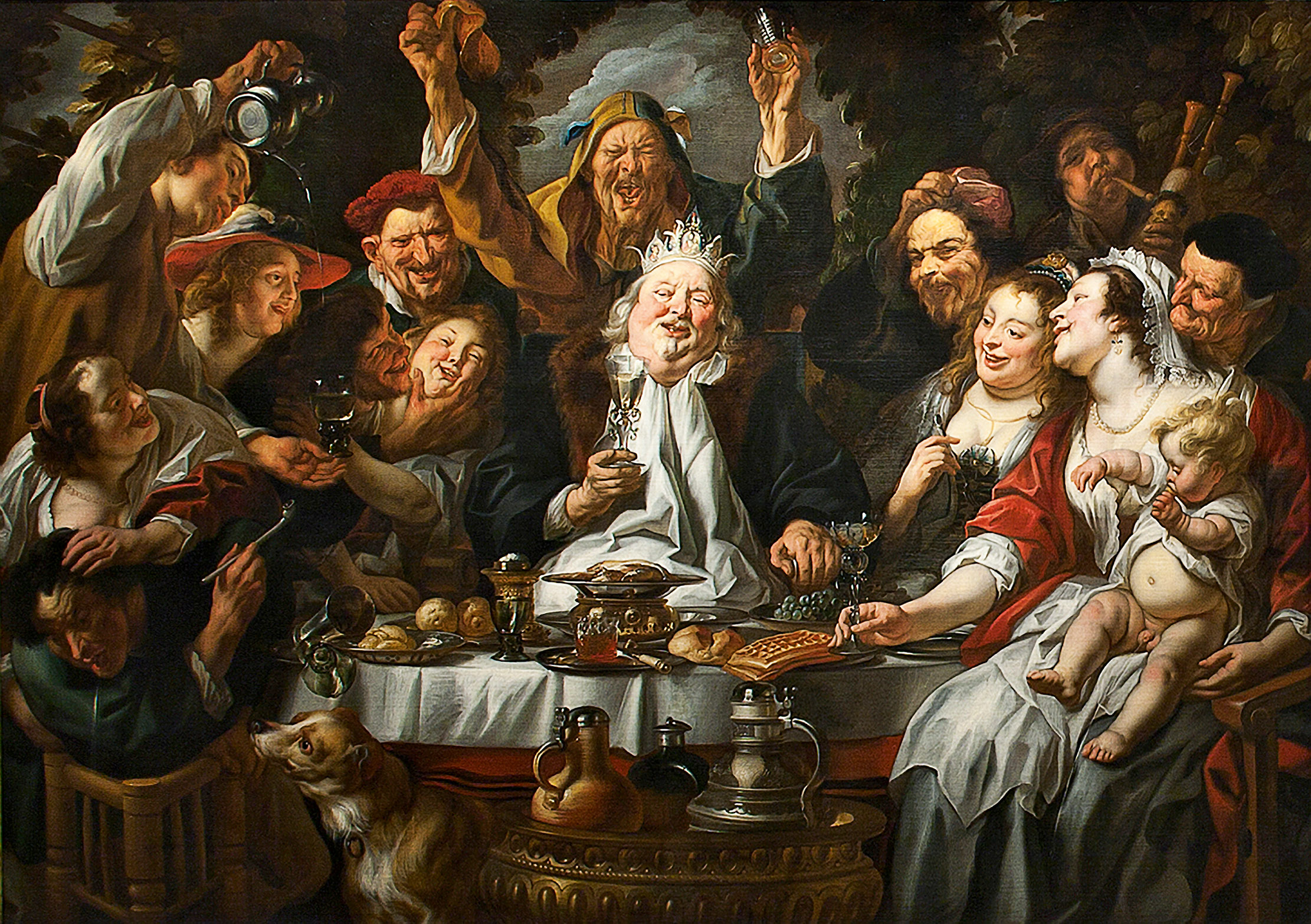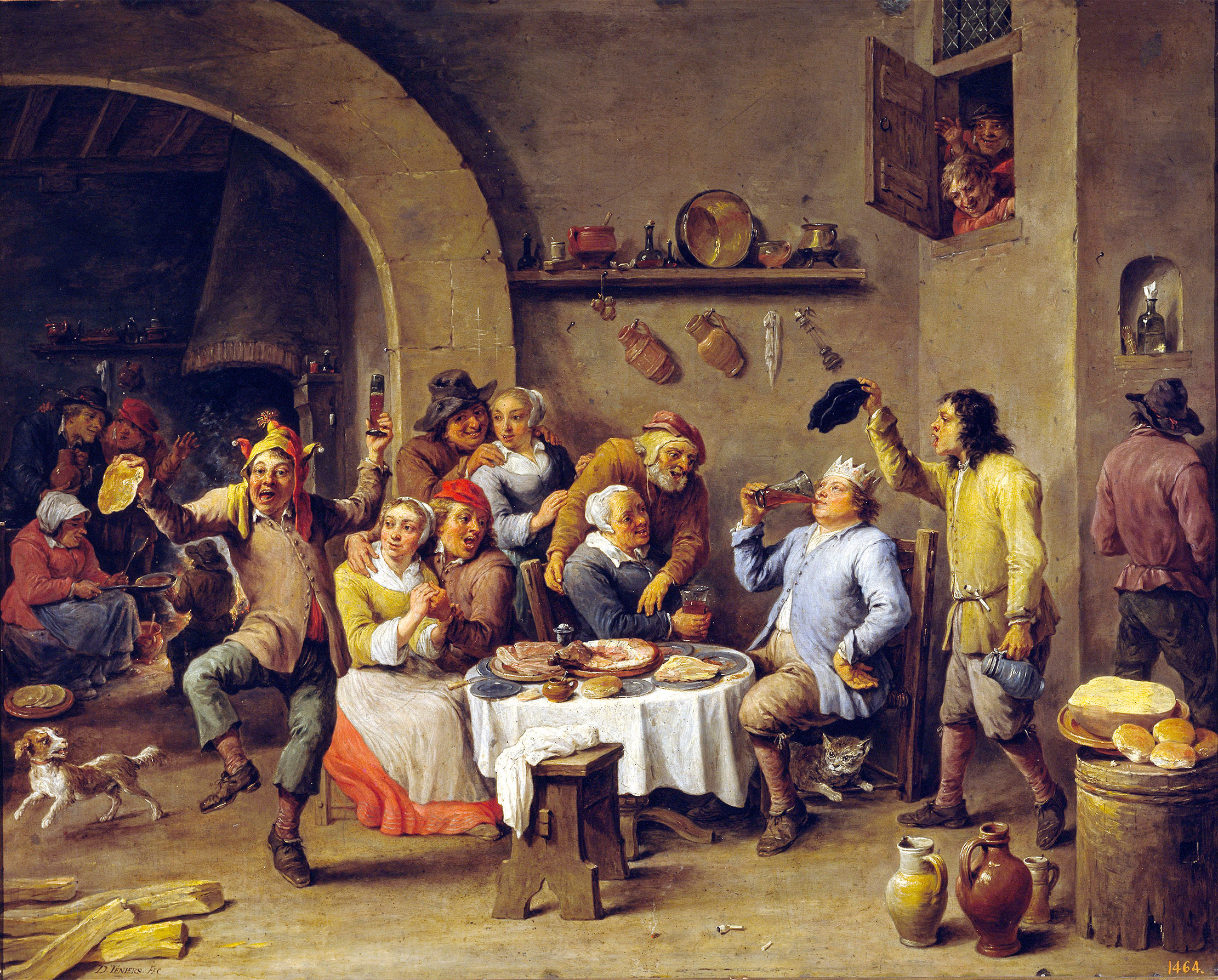Twelfth Night: What it is, when it falls and why it's the biggest celebration we no longer enjoy
Once a time of merriment when rules were subverted, Twelfth Night has long since lost its sparkle, says Vicky Liddell, as she digs into the colourful past of the Feast of Fools and finds that some traditions live on.


For most of us, Twelfth Night is the day we tear down tinsel and wrestle a desiccated tree out of the front door, but, up until the late 19th century, it was a time of feasting and merriment, second in importance only to Christmas Day. Fires were lit in the fields and revellers would go from door to door playing practical jokes on their neighbours. Also known as the Feast of Fools, Twelfth Night marked the end of the festive period and, in echoes of the ancient Roman mid-winter festival of Saturnalia, in which social order was reversed, it gave everyone the chance to dispense with normal conventions. Today, as have festivals such as Shrovetide and Whitsun, it has lost its meaning and dissolved into a lacklustre end of Christmas.
The Twelfth Night celebrations reached their apogee during the Tudor period when, among the aristocracy and nobility, the day was marked by masques and pageants. In 1532, at the Court of Henry VIII, 200 dishes were served and temporary kitchens were erected in the gardens of Greenwich Palace. Queen Elizabeth I had her own gingerbread-maker, who created figures of her and her guests; her grandfather, Henry VII, employed his own Lord of Misrule and an Abbot of Unreason to lead the revelry. Presents were exchanged and, right across the social scale, parties and family gatherings took place. At the centre of the festivities was a large domed fruit cake hiding a dried bean and a dried pea, which was given to all members of the household, including servants. Women were served from the left and men from the right. Whoever found the pea or bean in their slice was crowned ‘king’ or ‘queen’ for the evening, regardless of their social status. Sometimes, a clove was also introduced, signifying the role of ‘knave’ and, in 1666, Samuel Pepys admitted in his diary to finding a clove and secretly inserting it into his neighbour’s slice. What followed was an evening of misrule in which everything was turned upside down, even gender roles, and where rules had to be obeyed, however ridiculous.

By the Georgian era, the game had become more elaborate and unique sets of characters were available to purchase from entrepreneurial stationers. These could be cut up into small slips and chosen from a hat, with each guest having to stay in character until midnight. At one such gathering, Jane Austen is recorded as entering into the game with ‘more than a little spirit’ by a family friend, Sir William Heathcote, after selecting the character of Mrs Candour, who took people aside and told them exactly what she thought of them.
As the last embers of the yule log burned in the grate, a special drink, ‘Lamb’s Wool’, made from crab apples, cider and spices, was drunk and riotous parlour games — such as snapdragon, which involved snatching raisins out of flaming brandy without burning one’s fingers — were played with glee. Robert May, a contemporary of Pepys and author of The Accomplisht Cook, took the mischief further when he instructed his readers how to make joke pies full of live birds and frogs poised to escape when the crust was cut, saying: ‘This never fails to make the ladies skip and shreek.’
Twelfth Night was a time for ‘mumming’, too, when masked actors performed traditional folk plays. And, shortly before December 1600, Elizabeth I commissioned Shakespeare to write Twelfth Night; it was first performed in 1602 at Middle Temple to bring festivities to a close. The play, centred on twins Viola and Sebastian, makes use of the general disorder of traditional Twelfth Night celebrations and features many gender and status reversals.
The 18th century heaped confusion over the date of Twelfth Night. There has always been some uncertainty about it, as, depending on whether or not December 25 or 26 is considered to be the first day of Christmas, Twelfth Night can be January 5, the eve of Epiphany, or Twelfth Day, January 6, which marks the coming of the Magi. The shift to the Gregorian calendar and the subsequent loss of 11 days complicated matters, as it meant that the old Christmas day became Twelfth Night — so much so that some celebrate old Twelfth Night on January 17. However, today, most regard Twelfth Night to be the evening of January 6 and the day in which, according to superstition, all decorations must be removed.
Nonetheless, this was not always the case. Before the Victorian era, decorations were kept in place until Candlemas Day on February 2. Back then, taking them down too early was considered bad luck, because many believed that tree spirits lived in the holly and the ivy, which, if released outside prematurely, could adversely affect the harvest.
Exquisite houses, the beauty of Nature, and how to get the most from your life, straight to your inbox.
By the late 19th century, Twelfth Night was losing its sparkle. The rise of the Industrial Revolution meant employers were keen to have their workforce back in good time after Christmas and the New Year. In 1870, Queen Victoria outlawed the celebrations, which she regarded as rowdy and unChristian, and, by 1900, the Twelfth cake was almost extinct. Gradually, the decorated treat became the Christmas cake and the hidden pea and bean transformed into a sixpence in the pudding.
Happily, however, not all traditions have been lost. An 18th-century actor, Robert Baddeley, left a £100 legacy to Theatre Royal, Drury Lane for a cake in his name to be given to all the actors on stage on Twelfth Night. The Baddeley cake, as it is known, is still made and enjoyed with a glass of punch made to a secret recipe.

Another custom that continues is wassailing orchards to encourage a good harvest, an event currently experiencing a revival in the cider-making regions of Somerset. In the past 25 years, a new tradition has started on London’s Bankside with a ‘Holly Man’ bedecked in greenery, who arrives over the Millennium Bridge to the accompaniment of wassailers and mummers who perform a play for devotees and slightly bewildered tourists.
‘Twelfth Night may have lost its significance,’ observes Prof Martin Johnes, author of Christmas and the British, ‘but it is quite typical of Christmas traditions. We might imagine they are static and historic — and, indeed, that is part of their attraction — but they actually shift and alter with our changing tastes and culture.’ Bring back the Feast of Fools.

Curious Questions: Why do we take Christmas decorations down on January 6th? (And why it should really be the 5th)
Our houses never look better than they do throughout the festive period, so why do we take down Christmas decorations

Credit: Alamy Stock Photo
'When we take for granted our ever-available, low-cost food, we might remember how that certainty was achieved'
The turn in the weather prompts Country Life's columnist Agromenes to reflect on how modern farming gave us food security
Vicky Liddell is a nature and countryside journalist from Hampshire who also runs a herb nursery.
